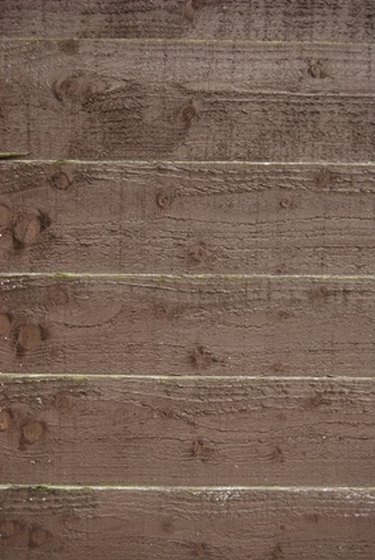
Paneling is used to cover a wood-framed structure of a home or building. It's usually made of plywood or a similar-grade wood. Paneling is installed as panels that look like thin rectangular sheets, which are either nailed or screwed to a frame. Problems with the panels buckling are possible under certain conditions.
Moisture
Video of the Day
According to TECO, a building supplier, moisture is one of the most common problems associated with wood structural panels buckling. As the panel's moisture content increases from exposure to rain or snow, it causes the panels to expand. The expansion is manifested in the panel warping, twisting and buckling. This issue generally occurs before the panels are installed, when preconstruction materials are left outside and are exposed to the elements. Panels must be acclimated to their environment prior to installation to allow time for the wood to adjust to the temperature and structural conditions.
Video of the Day
Poor Structural Design
A building with a poorly designed structure can also cause panels to buckle. A roof structure is apt to expand in cold weather when it does not have adequate ventilation in the attic. Inadequate ventilation allows moisture to build up in the attic space, which can affect the panels and cause them to become misshaped. Fortunately, panels that buckle under these circumstances can normally be fixed.
Inadequate Panel Spacing
Proper installation of panels requires adequate spacing to accommodate for normal wood expansion. When panels are placed too closely together, they can buckle when they expand. According to TECO, many wood structural panel manufacturers suggest leaving at least an 1/8-inch space around the outside of the panel in order to allow for expansion.